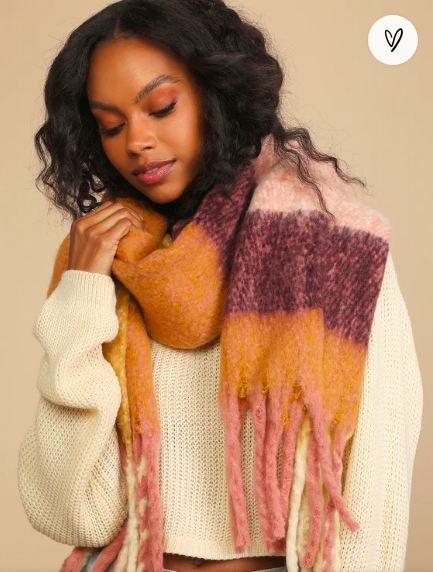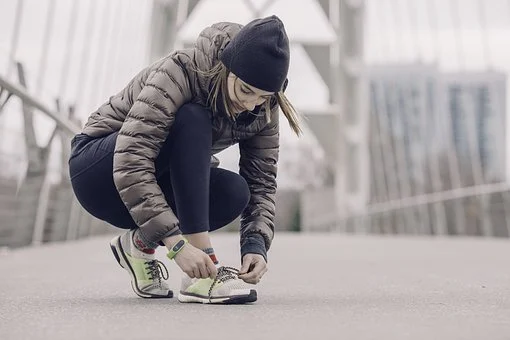When embarking on a journey into a secluded mountainous or any wild area away from civilization, it is vital to equip yourself with the necessary knowledge and tools for sustaining yourself especially in case things don’t go to plan. This truth is magnified when cold weather is in the forecast.
As access to clean water can mean life or death for any adventuring soul. With these technologies we’ve researched below, we feel confident in proceeding as planned with them in tow!
Before we get ahead of ourselves to enjoying treated safe drinking water, pack a bit of book knowledge in your noggin first. It’s not about locating just any water source, be it in frozen or liquid form; knowing the steps for efficient and effective water purification is paramount as well.
Table of Contents
Walking in a Winter Water Land – Choose Your Source

Let’s say you are planning a summer excursion at a high altitude or channeling your inner polar bear to prep for some winter camping solo or in good company. Landscapes and resources change from season to season and year to year, and the environment you trek into may or may not have currently running water sources (lakes or rivers), but there’s snow or ice that requires melting you can utilize. (But if there’s both, save yourself fuel and effort and go for running water!)
If you’re gathering already melted water:
- Be mindful of invisible contaminants by making sure your source is away from trails, campsites or animal dwellings (especially if you’re downhill from them).
- Seek out water at its fastest point in the stream. When water runs over rocks, especially in a stream bend, the rocks act as a pre-filter removing silt and other particles.
- Continuing the pre-filter mindset when collecting water, using a biodegradable coffee filter helps to catch sediment that might otherwise contribute to clogging up your water purification system.
For those of us who grew up in continental climates (or colder), there’s a reason we well-know the phrase “Don’t eat yellow snow!” When you are sourcing from snow:
- Avoid any that is near to the ground’s surface or anything that has discolored it as that could indicate contamination.
- If you’re melting snow using a heat source like a stove or campfire, place a small amount of liquid water in the bottom of your pot with the snow/ice to prevent scorch damage to your cookware.
- You can melt small amounts of snow and ice by placing a container of it inside your jacket next to your core.
Water Gadgets: From Gunky to Gulpable

Solar Kettle Thermal Flask Survival Gear With Temperature Gauge
$79.99 at retail, this 2.5lb is surprisingly light making it easily portable and well worth the price. There’s no need to pack fuel for this solar-powered kettle, so running it costs next to nothing and actually saves you precious cargo space.
Not only can it supply you with a hefty amount of clean water with a capacity of 3 cups (500mL), this solar kettle is a reliable source to make hot beverages and foods to warm you from the inside out. Miss washing up with warm water? Solved! Craving ramen on the trail? Solved! Not in the mood to bother filtering? Solved! Melt and boil snow in this sun-powered, self-contained kettle.
You can save even more room in your pack by attaching it to the outside using molle straps or the like. During transit, the reflectors that gather three times more energy than plain tubes are able to be folded in to protect the tube. This solar kettle gives you boiling water wherever the sun shines.
Guardian™ Purifier Backpacking Water Purifier | MSR®
For the serious or frequent wanderer, this top-tier water purifier is non-negotiable. This military grade filtration system will keep your drinking water safe, no matter the mountain range you’re in.
Pricing in at $389.95, that may feel steep. But don’t be deceived–the quality of this filter is undeniable. Boasting extreme durability, this freeze-resistant cartridge is super long-lasting with life expectancy over 10,000+ liters, paying for itself.
It’s barely there at a mere 1.1lb, has lightning fast filtering at 2.L per minute, and each pump contributes to its self-cleaning process. No post-trip scrubbing or filter cleaning required!
MSR’s Guardian purifier is among the safest in the world as it is effective against bacteria, viruses and protozoa on top of particulates against “worst-case” water conditions unlike other filters on the market. The one downside is that it does not filter out chemicals or toxins. If this concerns you because of knowledge you have about the area you’re in, passing the water through a simple carbon filter can make up for this.
MiniWorks® EX Purifier System | MSR®
Not everyone needs or can justify chunking out such serious change, and that’s okay! A mid-tier option that comes in at $129.95 is a close second for the deal. Again a pack-saver, this ultra light system weighs in at only 1lb and is field-maintainable.
Using this filter is fairly quick, able to process and clean water at a rate of 1L a minute. This purifier comes with 50 individually packaged aquatab tablets. Together, this system is effective against chemicals and toxins, bacteria, particulates, viruses and protozoa–the latter virtually impossible to find in run-of-the-mill filters.
Cold-Resistant Bladders

If you aren’t going on a long excursion or simply need a way to fill up on clean water to carry as you hike on through frozen terrain, these hydration packs are built for arctic conditions. If you’re planning on using a hydration bladder in sub-freezing temperatures, you’ll want an insulated design. And it works doubly for hot climates too! Keep your cold water cold, and keep your water protected from icing up.
Insulated bladders also tack on an insulated hose and bite valve cover. When using a bladder in particularly warm or cold weather, clearing out the bite valve and hose after each use ensures the water stays temperate. You can do this by blowing into the bite valve after drinking to send the water back to the insulated reservoir.
HydraSleeve Reservoir by HydraPak
If you want to keep hydrated in cold yet not extreme conditions, this pack will do it for you. Relatively cheap at $65, the HydraSleeve holds up to 3L of water. It’s known for being tough and durable and the bladder itself being highly insulated.
If you don’t mind carrying around a bulky product, can get around the quick-disconnect being a bit tricky to access, and don’t plan to take it into arctic weather where the valve and hose would be in danger of freezing, then this reservoir might fit the bill.
Zoid™ Hydration Pack by CamelBak
Although the Camelback Zoid is the “most basic” freeze-resistant bladder that they sell, there’s nothing basic about it. For $90, you get a fully insulated 2L bladder and sleeve and neoprene tube to keep the water, well, liquid.
The tube sits inside the shoulder strap that helps the pack ride high on your back, which is perfect for the avid skier or snowboarder since it never hits the lift chair. The clever secure design is light on straps, making it convenient to take on and off. The sternum straps are adjustable as well, so even the littlest member of the fam hitting the slopes can tote their own water.
Available in 3 colors, I’m partial to the Blue Mist option!
Powderhound™ 12 Hydration Pack by CamelBak
The $110 Powderhound has similar specs to the Zoid, but it has more features! This CamelBak model also has extra carry capacity for your gear. Use your pack to lug your snowboard or skis A-frame or diagonally on the outside of the pack!
Bonus: Still need more room? No problem! The expansion panel can be opened for more storage space–up to 610 cubic inches.
SnoBlast 22 Hydration Pack by CamelBak
$120 may be a bit much, but you get even more storage. With all of the features of the Powderhound, the SnoBlast has storage capacity of up to 1,220 cubic inches. But don’t worry about the extra bulk getting in the way–this was designed specifically to stay lift-friendly so that any ski resort attendee needn’t be concerned.
Bonus: On top of carrying 2L of water, the Powderhound has tri-zip access so that you can access all your extra trinkets like keys and wallet that may be hiding in the bottom of your pack and hard to get to in the other designs.
Don’t Forget to Drink Up!

A little-known fact: it may sound counter-intuitive, but you can dehydrate super easily in cold weather. You don’t feel as thirsty as thirst sensations are diminished in cooler conditions, therefore you drink less. On top of this, cold weather can stimulate urine production, cold, dry air can cause respiratory water loss, layered clothing can increase unnoticeable perspiration, all of which contribute to losing water faster than you’d expect.
Signs of dehydration to be on the lookout for: fatigue or weakness, dry mouth, dizziness, headaches, dry skin/lips, muscle cramps, unexplained confusion, and dark-colored urine.
To prevent dehydration during your wintry adventures, it’s essential to stay mindful of your fluid intake. Even if you don’t feel thirsty, make a conscious effort to drink an adequate amount of water throughout the day. Excessive alcohol and caffeine consumption can increase urine production, so being mindful here can also play a part in staying well-hydrated.
Additionally, you can bolster the effectiveness of the water you do drink by fortifying it with some electrolytes. When you consume electrolytes along with fluids, they help your body retain and absorb water more effectively as well as replenish minerals lost through sweat.
Nuun Sport Electrolyte Tablets
A favorite of many serious backpackers, these electrolyte tablets come in tubes containing 10 tablets each for $7.49 with an option to buy in bulk for a discount. One tablet dropped and dissolved into water with their wide array of naturally and lightly sweetened flavors will keep you coming back for more, keeping your hydration goal met (mmm, strawberry lemonade! d🤤). Some even come caffeinated for those super tired days!
I don’t always drink water, but when I do, I prefer to get the most out of every sip. And I do, thanks to these all-around good electrolyte mixes that offer a little bit of everything without going overboard on too much filler, relying more on natural ingredients.
Stay thirsty hydrated, my friends.
And remember: avoid the yellow snow!





